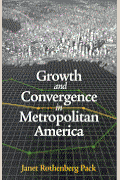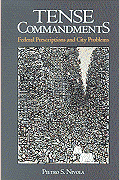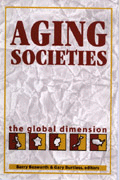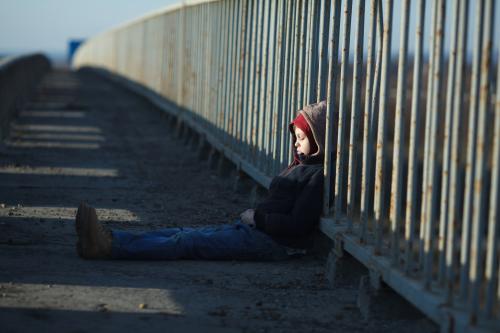Executive Summary
Americans know that we are on the edge of a national social security crisis, sparked by the retirement of 76 million people, the baby boomers, which will begin in 2011. But the impact of the aging of America will be felt beyond the federal government, its budget, trust funds, and agencies. The local effects of the aging of such a great proportion of the U.S. population will be substantial. Older Americans contribute a great deal to their communities, but many of them have particular needs that local governments have to address—both now, for the current group of elderly people, and later, for the large, graying baby boom.
Today’s Elderly and Where They Live
“Older Americans” are not monolithic. They differ in health, wealth, ethnicity, race, and, age. Generally, the young elderly have better health, more resources, and more social support from a spouse or family. The older elderly, those in their late 70s and 80s, often are sicker, poorer, and more isolated. Over the next several decades, as the baby boom generation ages, there will be even more diversity among older Americans. Much more so than for today’s elderly during their working age years, boomers are more divided with respect to family, marital, and living situations, the presence or absence of children who can provide support in old age, and their access to wealth and private pensions. During middle age, for example, more than a quarter of baby boomers were divorced, separated, or never married, compared to less than 14 percent of their parents. Less than a third of the oldest baby boomer women had three or more children, compared to well over half of current elderly women.
The demographic divisions within today’s, and tomorrow’s, older American population do not exist uniformly across space. This is not, however, because most elderly retire to sunny senior communities. Contrary to popular belief, only six percent of the elderly relocate in a given year, and only one percent move to a different state. The senior populations in most communities exist simply because residents “age in place.” This means that the social divisions that exist across space for the entire resident population become perpetuated, and even exacerbated, among the elderly population.
Fast-growing regions in the nation’s sunbelt that attracted professional, well-educated workers during their pre-elderly years will inherit a more “demographically advantaged” senior population—the well-educated, those closest to age 65, married couples, and people in good health. Similarly, suburban communities that attracted upper and middle-income families in the middle stages of their life course will also inherit a population of elderly residents who contribute more to the community’s tax base than they take away. These places will see a rise in the consumption of local services, and the involvement of an energetic, active population that has shown high levels of community engagement and local participation. On the other hand, areas that have declined overall will tend to keep the less advantaged segments of the elderly—older, less well-off, dependent populations—will need to provide for greater community services and prepare for likely net losses to their tax bases.
However, as the large, diverse baby boom cohort ages, the places where demographically advantaged live and those communities of the demographically disadvantaged will not break down so neatly along regional, or even city-suburban lines. Clusters of different types of 21st century older Americans will be found throughout individual metropolitan areas.
The Urban Elderly
Aging in place is a particular challenge for most of the central cities, inner suburbs, and metropolitan regions that have suffered economic and population declines in recent decades. In large parts of the Midwest, for example, and in many cities (and inner suburbs), one finds the aging-in-place of blue-collar, less well-off elderly, and a disproportionate number of those who have other challenges.
Overall, the urban elderly poverty rate is 14 percent, almost double the suburban elderly poverty rate of 7.4 percent. In 1990, in each of the largest U.S. metropolitan regions, a higher percentage of the urban elderly reported mobility limitations than did their suburban counterparts. Less than half of the urban elderly are married couples. City-dwelling older Americans are more likely to be African-American, Hispanic or Asian than the suburban elderly, are less educated than their suburban counterparts, and less likely to earn more than $25,000 a year. They are also less likely to be homeowners (72 percent of urban older Americans are owners, versus 85 percent of suburban older Americans), which means that they are less likely to have equity or assets to pay for health care or some form of assisted living in their later years.
Areas, whether regions or cities, that tend to keep the less advantaged segments of the elderly—older, poorer, sicker—will need to provide for greater community and public services even as their tax bases dwindle. As these elderly residents continue to age, their needs arising from failing health, death of a spouse, and increased disabilities will proliferate in communities that do not have the appropriate infrastructure. However, while the older American population in cities tends to have fewer resources than that in the suburbs, it is smaller in absolute numbers. According to 1997 figures, there are 74 percent more 65-74 year olds, 61 percent more 75-84 year olds, and 40 percent more of the oldest old, those 85 and above, in suburbs than in cities.
The Suburban Elderly
Older Americans have one overwhelming thing in common with Americans in general: most of them are living in the suburbs—62.5 percent as of 1997. From 1980 to 1997, the number of older American suburbanites leapt by 51 percent, while the number of city dwellers over 65 grew by 13 percent.
The settlement patterns of Americans ages 65 to 74 are more or less a preview of where the baby boomers will live as they reach age 65 and beyond. The young elderly of today are heavily represented in the more peripheral, fast-growing zones of our major metropolitan areas, or the outer suburbs where a car is a necessity for everyday life. Most of the large metropolitan areas with the fastest elderly population growth between 1980 and 1997 are car-friendly places that are rapidly gaining residents of all ages—places like Las Vegas, Phoenix, Sacramento, Houston, Austin, San Antonio, Atlanta, Denver, and Salt Lake City. The suburban elderly in these places have a higher level of automobile ownership than in the suburbs of any other region. In the suburbs of Phoenix, for example, 91 percent of the elderly own a car.
Even more so than today’s elderly, aging boomers will live in suburban communities that will be unprepared to deal with the special needs of seniors as baby boomer age in place. The strong majority of counties with the highest percentage of people ages 45 to 54 are suburban. Will the residents of these places, the boomers moving steadily towards elderhood, still be able to function effectively when they reach the age where they can no longer drive safely? The general paucity of public transportation systems in the suburbs will make their mobility more difficult. Moreover, the suburban elderly are not uniformly well-off. Concentrations of demographically disadvantaged boomer elderly will arise within suburban communities that will not be prepared to deal, not only with transportation, but also with the social services and health care needs of a fast-growing, less well-off senior population. These pockets of disadvantage will not be isolated areas, but will become commonplace within most of the nation’s metropolitan regions.
Given the strong aging in place tendencies of the elderly, we can begin to think beyond social security, and plan for the next generation of elderly citizens’ needs for transportation, housing medical, and social services. Yet the difficulties that have always arisen within the suburbs and cities with respect to issues of zoning, land use, and conflicting political interests may only serve to squelch the emergence of different policies. The challenges will only grow in the next two decades when even sharper divisions in the older American population emerge across metropolitan communities, as the “age wave” of baby boomers rolls on.








